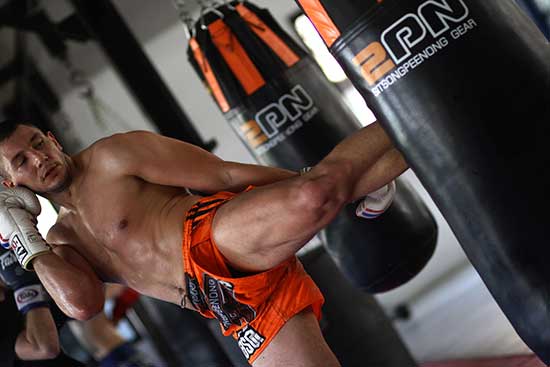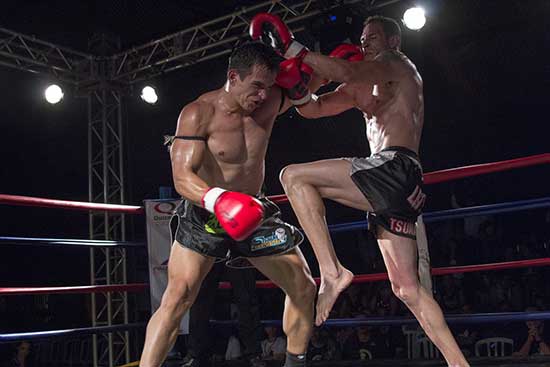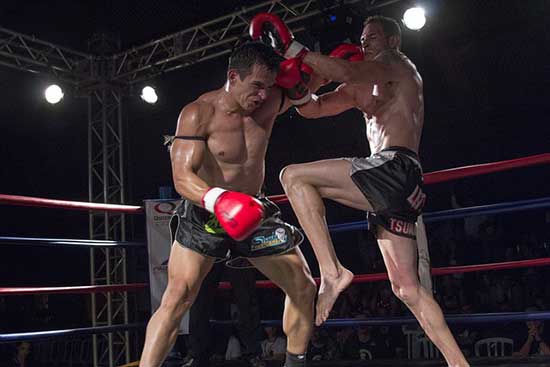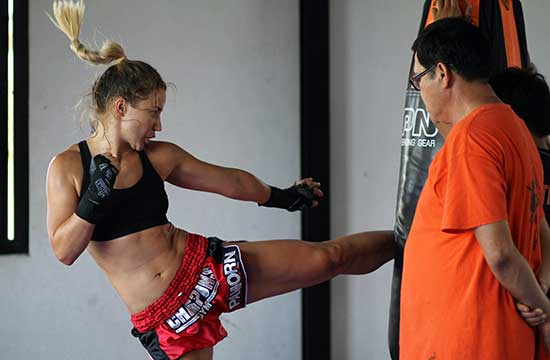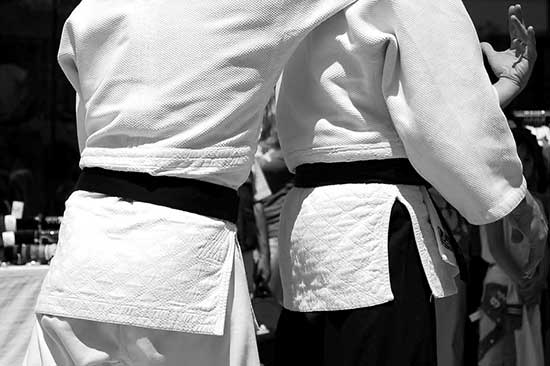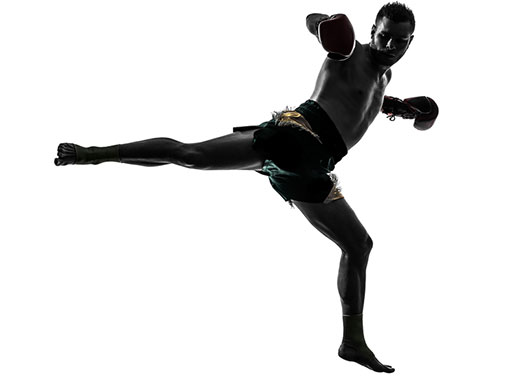When it comes to traditional martial arts, Southeast Asia is rich in history and cultural significance.
Bokator, originating over 1700 years ago in Cambodia, is an ancient battlefield martial art. With its strict system-based approach, Bokator incorporates various forms and techniques, including the use of weapons.
On the other hand, Muay Thai, also known as the “Art of Eight Limbs,” originated in Thailand in the 18th century and is more flexible, allowing fighters to specialize in specific strengths.
Key Takeaways:
- Bokator and Muay Thai are traditional martial arts from Southeast Asia.
- Bokator is an ancient battlefield martial art with a strict system-based approach.
- Muay Thai, known as the “Art of Eight Limbs,” allows fighters to specialize in specific strengths.
- Bokator incorporates various forms and techniques, including the use of weapons.
- Muay Thai focuses on powerful strikes and utilizes punches, kicks, elbows, and knee strikes.
Contents
Understanding Bokator: The Ancient Cambodian Martial Art
Bokator is an ancient martial art that originated in Cambodia on the ancient battlefields of the Khmer Empire. Its roots date back over 1700 years, making it one of the oldest traditional martial arts in Southeast Asia.
Bokator is not just a fighting style; it is a comprehensive system that encompasses various forms and techniques, allowing practitioners to utilize every part of their body as a weapon. Moves in Bokator are named after animals, such as horses, dragons, eagles, and crocodiles, reflecting the art’s connection to the natural world.
The diverse range of techniques in Bokator includes strikes, kicks, grappling, traditional wrestling, and the use of various weapons like double sticks, double swords, a long staff, and a scarf.
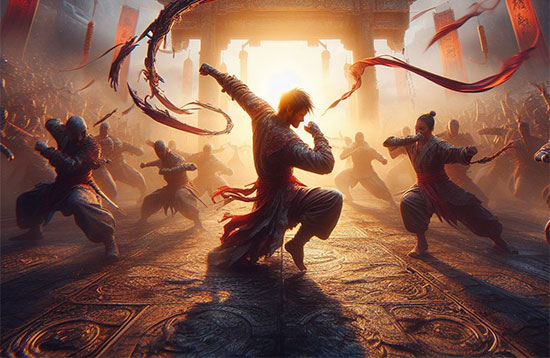
Despite its rich history, Bokator faced near extinction during the brutal Khmer Rouge regime in the 1970s. However, thanks to the efforts of Grandmaster Sam Kim Sean, the art has experienced a revival and is now being practiced and taught both in Cambodia and abroad. Bokator not only preserves the ancient martial art but also showcases the resilience and spirit of the Cambodian people.
The Unique Aspects of Bokator
What sets Bokator apart from other martial arts is its emphasis on practicality, flexibility, and adaptability. Bokator is not limited to a rigid set of techniques; instead, practitioners are encouraged to innovate and create their techniques based on their own strengths and the situation at hand.
This makes Bokator a highly versatile and adaptable martial art that can be tailored to the individual practitioner’s body type, skill level, and fighting style.
Additionally, Bokator incorporates ground fighting techniques, making it one of the few martial arts in Southeast Asia that includes this aspect. Ground fighting allows practitioners to effectively defend themselves and control their opponents in close-quarters combat scenarios. This unique aspect of Bokator has gained attention in the world of mixed martial arts (MMA), as fighters and trainers recognize the value of incorporating Bokator techniques into their training.
Overall, Bokator is not just a martial art; it is a living testament to the rich history and cultural heritage of Cambodia. Its unique techniques, adaptability, and focus on practicality make it a compelling martial art that continues to captivate practitioners and enthusiasts around the world.
| Key Features of Bokator | Details |
|---|---|
| Origin | Khmer Empire in Cambodia over 1700 years ago |
| Forms and Techniques | Comprehensive system with various forms and techniques, including strikes, kicks, grappling, traditional wrestling, and the use of weapons |
| Ground Fighting | Bokator incorporates ground fighting techniques, making it one of the few martial arts in Southeast Asia to do so |
| Revival | Nearly eradicated during the Khmer Rouge regime, Bokator has been revived by Grandmaster Sam Kim Sean |
| Adaptability | Practitioners are encouraged to create their techniques based on their strengths and the situation at hand |
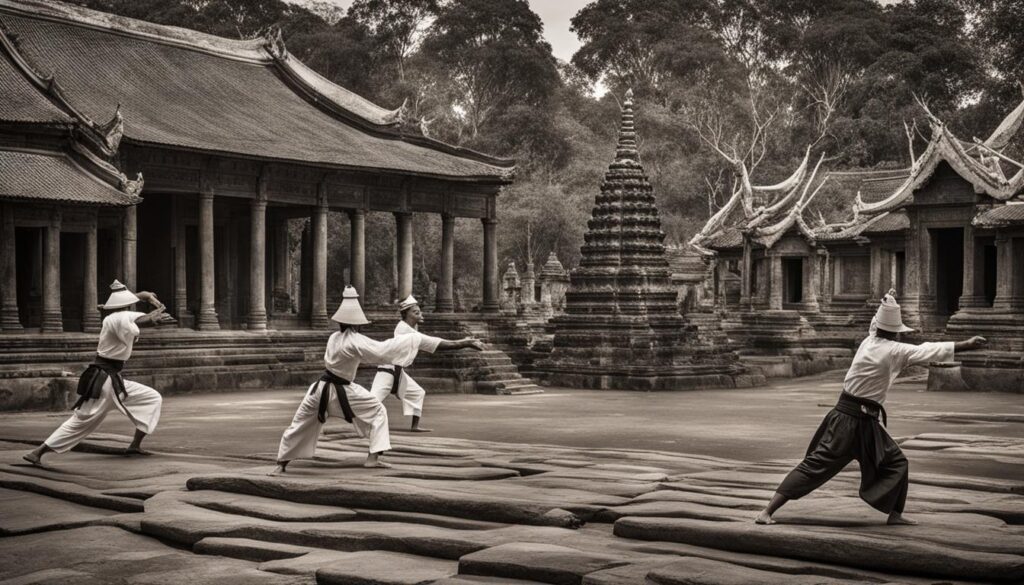
Exploring Muay Thai: The Art of Eight Limbs
Muay Thai, also known as Thai Boxing, is a traditional martial art that originated in Thailand in the 18th century. It is often referred to as the “Art of Eight Limbs” due to its unique fighting style that makes use of punches, kicks, elbows, and knee strikes. With eight points of contact, Muay Thai practitioners have a wide range of striking techniques at their disposal.
One of the defining characteristics of Muay Thai is its emphasis on powerful strikes. Practitioners are trained to deliver devastating blows and strikes with precision and accuracy. The training in Muay Thai focuses on developing strength, speed, and agility, enabling fighters to deliver powerful attacks that can incapacitate opponents.
Thai boxing incorporates various techniques, including clinching, which involves holding and controlling an opponent while delivering strikes. The clinch is a unique aspect of Muay Thai that sets it apart from other striking-based martial arts. It allows practitioners to control the opponent’s movements, deliver powerful knee strikes, and execute devastating throws.
Differences in Fighting Styles: Bokator vs Muay Thai
When comparing Bokator and Muay Thai, one of the key distinctions lies in their fighting styles. Bokator is a strict system-based martial art that incorporates various techniques, including grappling, traditional wrestling, and ground fighting.
In Bokator, practitioners are trained to engage in close combat, using joint locks, throws, and submissions to neutralize their opponents. The emphasis on ground fighting sets Bokator apart from many other martial arts in Southeast Asia.
On the other hand, Muay Thai is primarily a standup fighting art that focuses on strikes using fists, elbows, knees, and shins. Known as the “Art of Eight Limbs,” Muay Thai utilizes all available striking surfaces to deliver powerful blows to the opponent.
While Muay Thai does incorporate some elements of clinching, it places a greater emphasis on maintaining a dominant position and striking from a standing position.
To further understand the differences between Bokator and Muay Thai, let’s take a look at a comparative table:
| Aspect | Bokator | Muay Thai |
|---|---|---|
| Striking Techniques | Includes punches, kicks, elbows, and knees | Emphasizes strikes using fists, elbows, knees, and shins |
| Grappling Techniques | Utilizes joint locks, throws, and submissions | Incorporates some elements of clinching |
| Ground Fighting | Includes ground fighting and submissions | Mainly focuses on maintaining a standing position |
As seen in the comparison table, Bokator and Muay Thai have distinct differences in their fighting styles.
Bokator places greater emphasis on ground fighting and incorporates a wider range of grappling techniques, while Muay Thai focuses on standup fighting and powerful strikes. The choice between the two martial arts ultimately depends on an individual’s preferences in terms of combat style and techniques.
Effectiveness for Self-Defense: Bokator vs Muay Thai
When it comes to self-defense, both Bokator and Muay Thai can be effective martial arts to learn. Each style has its unique strengths and techniques that can be utilized in real-life situations. However, the effectiveness of these martial arts may vary depending on the circumstances and the practitioner’s training and experience.
Bokator, with its emphasis on grappling, traditional wrestling, and ground fighting, can be advantageous in self-defense scenarios that involve close-quarter combat. The practitioner’s ability to control an opponent on the ground and apply submissions or chokes can be highly effective in neutralizing threats.
However, it is essential to note that mastering Bokator’s ground-fighting techniques requires significant training and experience.
Muay Thai, on the other hand, is primarily a striking-based martial art that focuses on punches, kicks, elbows, and knee strikes. The versatility and efficiency of Muay Thai’s striking techniques make it a formidable choice for self-defense.
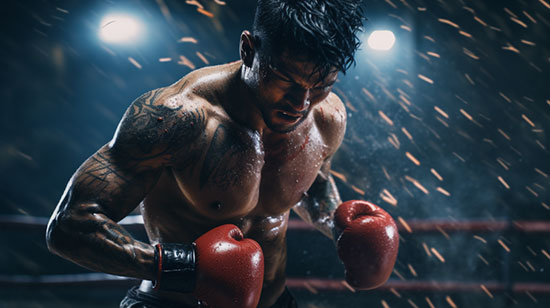
Whether it is delivering powerful strikes to fend off an attacker or using precise knee strikes in close combat, Muay Thai provides practitioners with practical techniques to defend themselves.
In a real-life self-defense situation, Muay Thai may be considered more effective due to its adaptability and the ability of practitioners to create their own self-defense techniques.
Muay Thai’s emphasis on standup fighting and clinching allows practitioners to utilize their strengths effectively. However, it is worth mentioning that both Bokator and Muay Thai can be highly effective if the practitioner has sufficient training, experience, and situational awareness.
Bokator vs Muay Thai for Self-Defense: A Comparison
| Aspect | Bokator | Muay Thai |
|---|---|---|
| Focus | Ground fighting and grappling techniques | Striking techniques and clinching |
| Advantages | Submission and choking techniques on the ground | Versatile striking techniques and clinch work |
| Training Requirements | Extensive training in ground fighting | Training in striking techniques and clinch work |
| Suitability | Effective for close-quarter combat situations | Adaptable in various self-defense scenarios |
Ultimately, the choice between Bokator and Muay Thai for self-defense comes down to personal preference, training goals, and practicality in one’s environment.
Both martial arts offer unique techniques and skills that can be utilized effectively in self-defense situations. It is essential to choose a martial art that aligns with your individual needs, interests, and capabilities to maximize your effectiveness in real-life scenarios.
The Impact of Ground Fighting in Bokator & the Rise of MMA
Bokator’s inclusion of ground fighting sets it apart from many other martial arts in Southeast Asia. While ground fighting is not as effective as Brazilian Jiu-Jitsu or Western wrestling, it is the only known ground fighting art in the region.
In the context of a Bokator vs Muay Thai fight, the ground fighting aspect of Bokator could give it an advantage. The rise of Mixed Martial Arts (MMA) has also emphasized the importance of grappling and ground fighting, with many fighters incorporating Bokator techniques into their MMA training.
Ground fighting, also known as grappling, involves techniques that are executed on the ground. These techniques include submissions, joint locks, chokes, and positional control.
Bokator’s ground fighting techniques, although not as advanced as those found in dedicated grappling arts, provide practitioners with a solid foundation in close-quarters combat.
The influence of ground fighting can also be seen in the rise of MMA, a combat sport that combines various aspects of different martial arts.
MMA fighters, who are often well-rounded in both striking and grappling, have recognized the value of ground fighting and incorporated it into their training. Bokator practitioners, with their knowledge of ground fighting techniques, have found success in the MMA arena, showcasing the effectiveness of Bokator’s unique skills.
The Rise of Bokator in MMA
| MMA Fighters with Bokator Background | Notable Achievements |
|---|---|
| Sam-A Gaiyanghadao | ONE Championship Strawweight Muay Thai World Champion |
| Chan Rothana | Cambodian Featherweight MMA Champion |
| Thai Rithy | Cambodian Bantamweight MMA Champion |
These fighters, trained in Bokator, have successfully transitioned their ground fighting skills into the MMA arena, showcasing the effectiveness of Bokator’s techniques.
Bokator in MMA not only highlights its importance as a martial art but also demonstrates the impact of ground fighting on modern combat sports.
Final Words
After exploring the differences between Bokator and Muay Thai, it is clear that these martial arts offer distinct fighting styles and techniques. Bokator, with its focus on grappling, traditional wrestling, and ground fighting, provides a comprehensive system that allows practitioners to engage in both striking and close-quarters combat.
On the other hand, Muay Thai excels in powerful strikes, utilizing the eight points of contact to deliver devastating blows.
When it comes to self-defense, both Bokator and Muay Thai have their merits. While Muay Thai’s versatility and ability to adapt to different scenarios make it a practical choice, Bokator’s ground-fighting abilities can also be advantageous in certain situations.
Ultimately, the effectiveness of each martial art depends on the individual’s goals, preferences, and personal fighting style.
In conclusion, the comparison between Bokator and Muay Thai highlights the distinction between striking and grappling martial arts. Whether you prefer the well-rounded system of Bokator or the powerful striking of Muay Thai, both martial arts offer unique techniques and can be effective in combat sports and self-defense.
To make an informed decision, it is important to consider your own preferences and objectives before choosing the martial art that best suits you.
